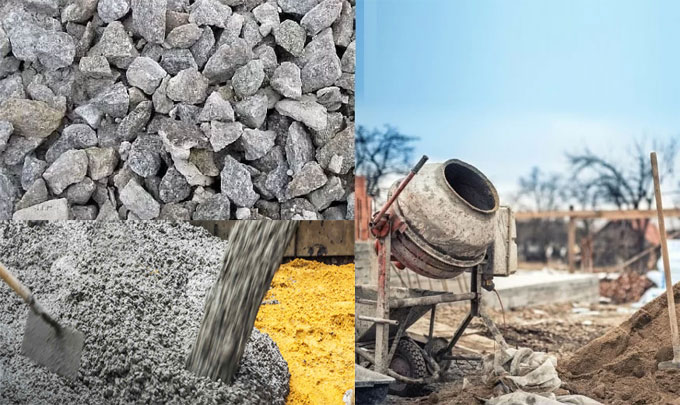
Impact of course aggregate on mix design of concrete

Coarse aggregate is considered as one of the vital elements of concrete and captures the major volume in the mix as well as impacts the concrete mix design significantly. Its different characteristics like strength, maximum size, shape, and water absorption affect water demand, the quantity of cement and fine aggregate in concrete mixture.
It is found that high maximum coarse aggregate size can reduce water demand in the mixture as such aggregate contains lower surface area with regards to small coarse aggregate size.
While considering shape, rounded type aggregate offers reasonable mix design for normal strength concrete.
For high strength concrete, angular coarse aggregate is essential. The scope of segregation is reduced when coarser aggregate is graded perfectly for concrete mix design.
While considering strength, greater aggregate strength generates higher concrete strength.
1. Maximum Aggregate Size: The maximum size of coarse aggregate is another vital factor that checks water demand to attain definite workability. It also determines the quantity of fine aggregate content required for developing cohesive mix.
For a specified weight, if the maximum size of aggregate is increased, the surface area of coarse aggregates is reduced and conversely. When the maximum size of coarse aggregate is decreased, the surface area of coarse aggregate is raised. If the surface area is large, the water demand will be increased to coat the particles and produce workability.
For smaller maximum size of coarse aggregate, larger fine aggregate content is required to coat particles and retain cohesiveness of concrete mix. Therefore, for similar workability, 40mm down aggregate contains lower water/cement ratio, thus strength is raised with regards to 20mm down aggregate. Due to its lower water demand, higher maximum size of coarse aggregate can reduce the cement consumption.
Maximum size of aggregate is confined with clear cover and minimum distance among the reinforcement bars. Maximum size of coarse aggregate is lower than clear cover or minimum distance among the reinforcement bars. As a result, the aggregates can get through the reinforcement in congested areas, to form dense and uniform concrete.
2. Grading of Coarse Aggregate: Grading means the establishment of the particle-size distribution for aggregate. It influences the amount of cement and water requirements, workability, pumpability, and stability of concrete. The grading of coarse aggregate is crucial to acquire cohesive and dense concrete. The voids due to larger coarse aggregate particles are filled with smaller coarse aggregate particles.
If the grading of coarse aggregate is perfect, the scope of segregation is reduced, specifically for higher workability and the compatibility of concrete in enhanced. The coarse aggregate grading limits are provided in ASTM C33/ C33M and IS 383 ? 1970 ? table 2, Clause 4.1 and 4.2 for single size aggregate as well as graded aggregate.
3. Shape of Coarse Aggregate: The shape of coarse aggregates range from round, angular, or irregular. Rounded aggregates contain lowest water demand because of lower surface area, and also contain lowest mortar paste requirement.
These properties facilitate to produce rounded aggregate to give in the most reasonable mixes for concrete grades up to M35. However, for concrete grades of M40 and above the scope of bond failure would slant the balance in support of angular aggregate containing larger surface area.
Flaky and elongated coarse aggregate particles raise the water demand as well as the susceptibility of segregation. The flexural strength of concrete is minimized due to flakiness and elongation. Specifications provided by Ministry of Surface Transport confine the combined flakiness and elongation to 30% by weight of coarse aggregates.
4. Strength of Coarse Aggregate: Material strength of coarse aggregate is determined by crushing strength of rock, aggregate crushing value, aggregate impact value, aggregate abrasion value. The IS limits for above tests range from Aggregate Crushing value, Aggregate Impact value, and Aggregate abrasion value.
5. Aggregate Absorption: The purpose of aggregate absorption is to employ a correction factor for aggregates in dry condition and find out water demand for concrete in saturated surface dry condition. Aggregate can consume water up to 2 % by weight when remains in bone dry state. But occasionally, the aggregate absorption remains as high as 5%.


